会话令牌是一段数据(UUID),用于 REST 调用中以标识 会话(一系列相关的消息交换)。所有 2D 图块和街景图像请求都必须包含会话令牌。
将其作为 session 参数的值添加到所有请求 网址 中。
在 Map Tiles API 中,会话令牌表示一组已定义的显示选项。这意味着您不必在每个图块请求中传递一组显示选项。您可以在多个客户端中使用同一会话令牌。
会话令牌目前自签发时间起有效期为两周,但此期限可能会发生变化。您随时可以通过查看响应消息中的 expiry 字段来检查会话令牌的过期时间。
会话令牌请求
如需请求会话令牌,请向 createSession 端点发送 HTTPS POST 请求,如以下示例所示。您必须发送带有 Content-Type: application/json 标头的请求。
curl -X POST -d '{ "mapType": "streetview", "language": "en-US", "region": "US" }' \ -H 'Content-Type: application/json' \ "https://tile.googleapis.com/v1/createSession?key=YOUR_API_KEY"
必填字段
mapType基础地图的类型。这个值可以是以下值之一:
language一个 IETF 语言标记,用于指定在功能块上显示信息时所用的语言。例如,
en-US指定了美国英语。region表示用户的实际位置的通用语言区域数据代码库区域标识符(两个大写字母)。例如
US。
可选字段
imageFormat- 指定要返回的文件格式。有效值为
jpeg或png。 JPEG 文件不支持透明度,因此不建议用于叠加图块。如果您未指定imageFormat,系统会自动选择最适合相应图块的格式。 scale放大地图元素(例如道路标签)的大小,同时保留默认图块的图块大小和覆盖区域。增大比例还会减少地图上的标签数量,从而减少杂乱感。以下值是有效的
scale值:scaleFactor1x:默认值。scaleFactor2x:将标签大小加倍,并移除次要功能标签。scaleFactor4x:将标签大小增加为原来的四倍,并移除次要功能标签。
以下示例展示了缩放地图元素的效果。
| 缩放比例 1 倍 | 缩放比例 2 倍 |
|---|---|
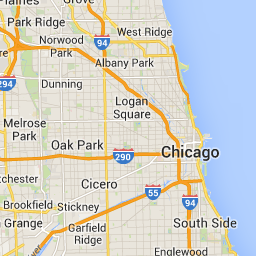 |
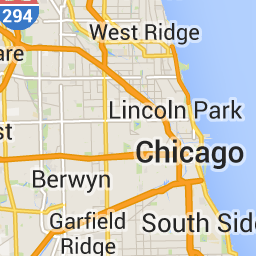 |
highDpi- 指定是否返回高分辨率图块。如果放大倍数增加,则使用
highDpi来增加图块的大小。通常,增加缩放比例会将生成的图块放大为相同大小的图片,从而降低质量。使用highDpi时,输出大小也会增加,从而保持质量。DPI 是“每英寸的点数”的缩写,高 DPI 表示图块的渲染所用的每英寸点数比正常情况多。如果值为true,则 x 和 y 维度中每个维度的像素数都会乘以缩放比例(即 2 倍或 4 倍)。图块的覆盖区域保持不变。 此参数仅适用于scale值为 2 倍或 4 倍的情况。对 1 倍缩放比例的图块没有影响。
| 缩放比例 1 倍 | 缩放比例 2 倍高 DPI |
|---|---|
 |
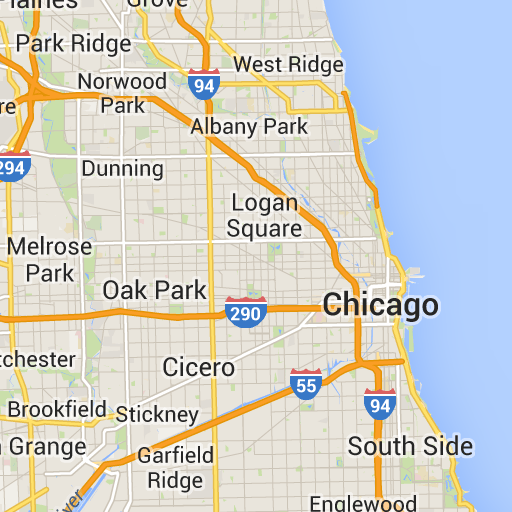 |
layerTypes一个值数组,用于指定添加到地图中的图层类型。有效值包括:
layerRoadmap- 如果您将地图类型指定为
terrain,则此属性为必需属性。还可以选择性地叠加在satellite地图类型上。对路线图板块没有影响。 layerStreetview- 在地图上使用蓝色轮廓显示支持街景的街道和地点。
layerTraffic- 显示当前路况。
styles一个 JSON 样式对象数组,用于指定道路、公园和建成区等地图项的外观和详细程度。样式设置用于自定义标准 Google 基本地图。只有当地图类型为
roadmap时,styles参数才有效。如需了解完整的样式语法,请参阅样式参考。overlay一个布尔值,用于指定
layerTypes应呈现为单独的叠加层,还是与基础影像合并。如果值为true,则不显示基础地图。如果您未定义任何layerTypes,则系统会忽略此值。
例如,请求具有 layerRoadmap 图层的 satellite 地图类型,并将 overlay 设置为 false,会生成与 Maps JavaScript API 中使用的 hybrid 地图类型(左图)等效的图块。如果将 overlay 设置为 true,则相同的地图和图层类型会生成一个透明图块,其中包含一个地图叠加层,该叠加层的样式适合叠加在卫星图像上(右侧图片)。
overlay:false |
overlay:true |
|---|---|
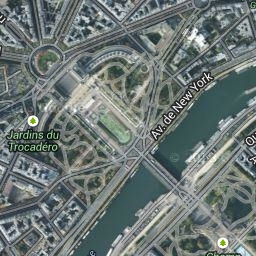 |
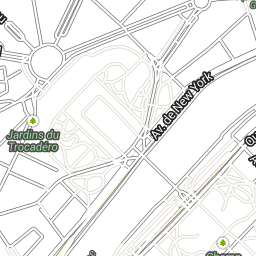 |
以下 JSON 是一个典型的请求正文示例,其中包含必需字段和可选字段。
{
"mapType": "satellite",
"language": "en-US",
"region": "us",
"layerTypes": [ "layerRoadmap", "layerStreetview" ],
"overlay": true,
"scale": "scaleFactor1x",
"styles": [
{
"stylers": [
{ "hue": "#00ffe6" },
{ "saturation": -20 }
]
},{
"featureType": "road",
"elementType": "geometry",
"stylers": [
{ "lightness": 100 },
{ "visibility": "simplified" }
]
}
]
}
此示例提供了一个适合与卫星图像组合的叠加层。此示例同时包含路线图和街景叠加层。生成的地图会以美国英语显示名称和数据。
会话令牌响应
以下 JSON 是一个响应正文示例。
{
"session": "IgAAAHGU9jnAU4KOAfwY3Bcd6eH_WxQsyocSBAdUnAr9pnvTTNXtF9c_27RBo94ytEXTDg",
"expiry": "1361828036",
"tileWidth": 256,
"tileHeight": 256,
"imageFormat": "png"
}
以下列表包含响应正文中各个字段的定义。
session- 一个会话令牌值,您必须将其包含在所有 Map Tiles API 请求中。
expiry- 一个字符串,其中包含令牌到期的时间(自纪元以来的秒数)。会话令牌自创建之日起的有效期为两周,但此政策可能会发生更改,恕不另行通知。
tileWidth- 以像素为单位的图块宽度。
tileHeight- 以像素为单位的图块高度。
imageFormat- 图片格式,可以是
png或jpeg。

